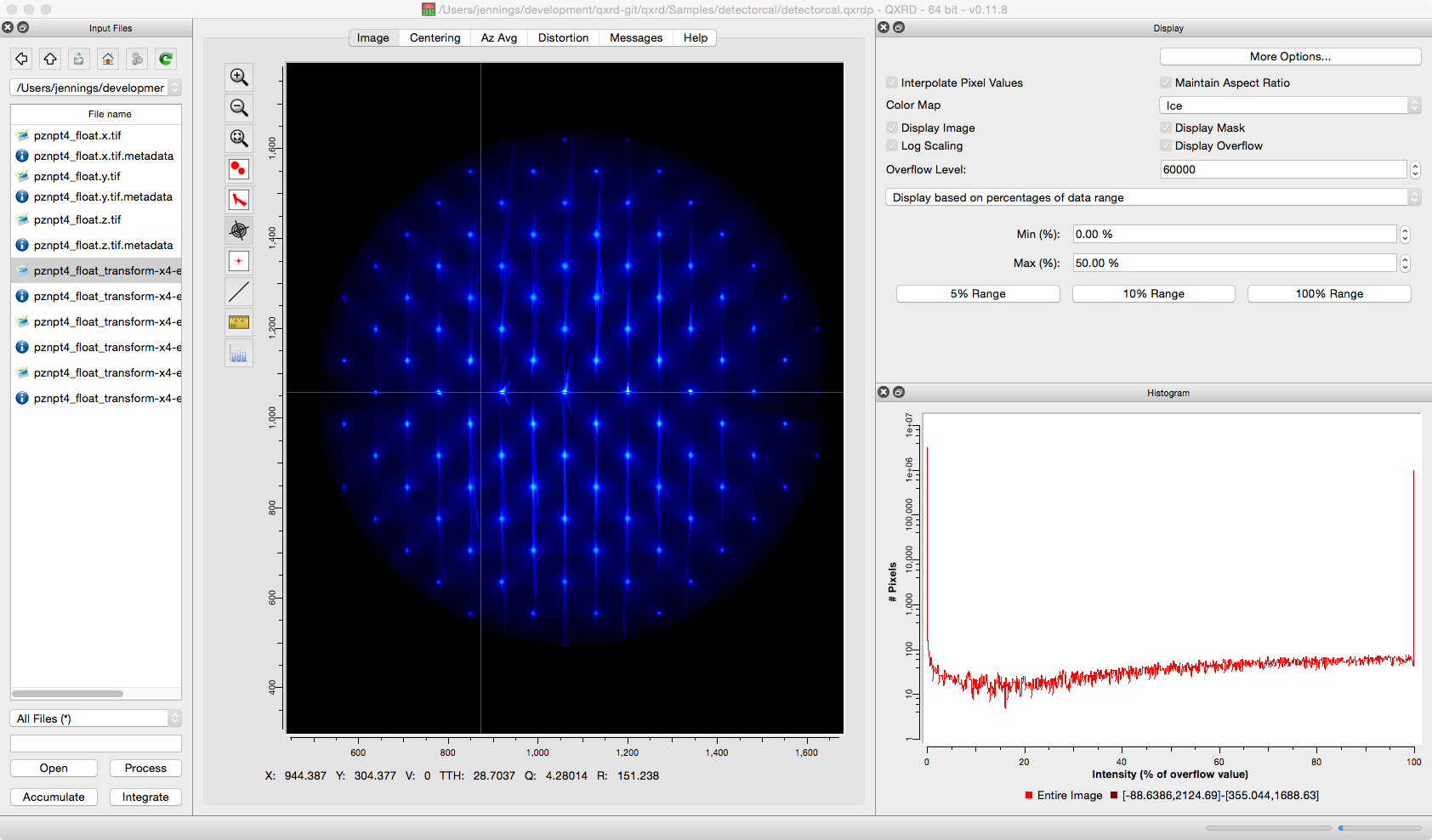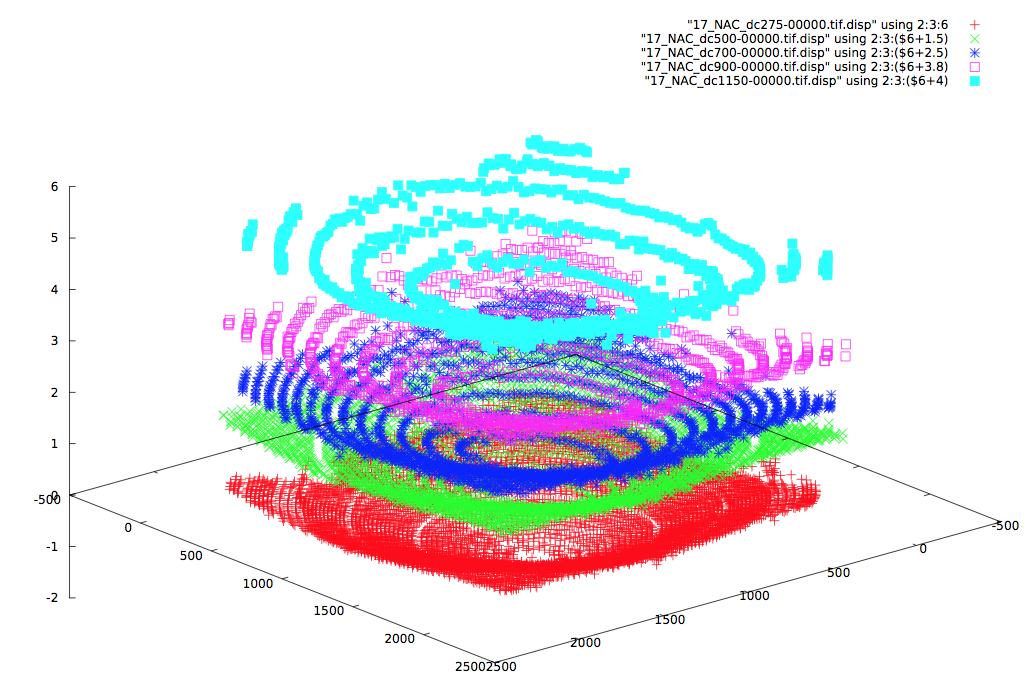
Throughout the development of QXRD, a prime concern has been to make it as accessible as possible to other users – binary installers are provided as a matter of course and the installation is very nearly entirely self contained. Very little configuration is required after installation – in most cases acquisition will ‘just work’ immediately after installation. The visualization and data reduction facilities provided are aimed primarily at powder diffraction and/or SAXS measurements. The performance is such that visualization and data reduction can almost always be performed at the maximum data rate of the detector. Recent work has focused on implementing corrections for detector image plane distortions, which have been found to have a small but measurable effect on powder diffraction measurements. By fitting diffracted ring positions to images measured from calibrant samples and comparing measured vs calculated diffraction angles, one can create a Delaunay triangulation of reference positions which may be used to correct the angle scale of an integrated powder diffraction image. |
| Distribution & Impact |

|
| Funding Source |
|
This project has been produced using operational funding from the APS, contract DE-AC02-06CH11357. |
